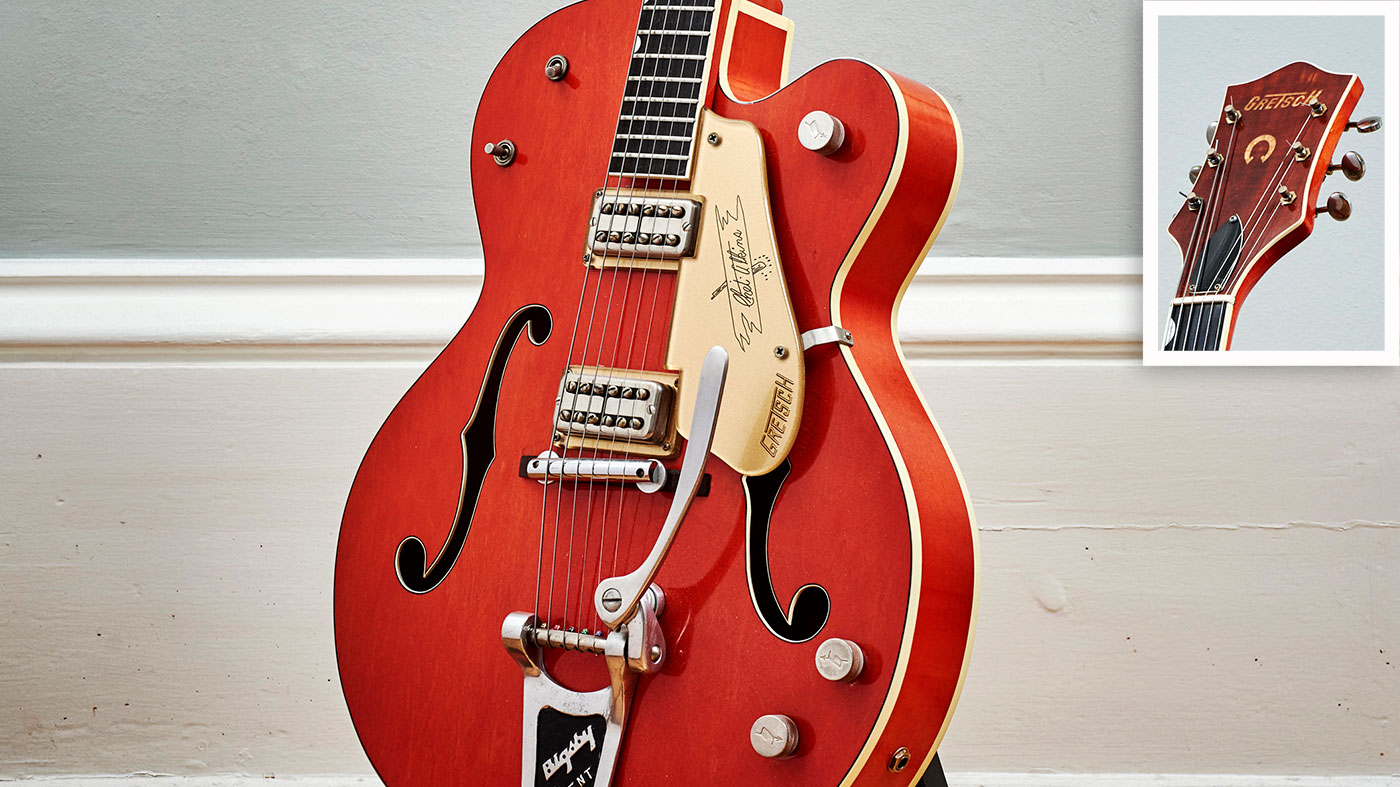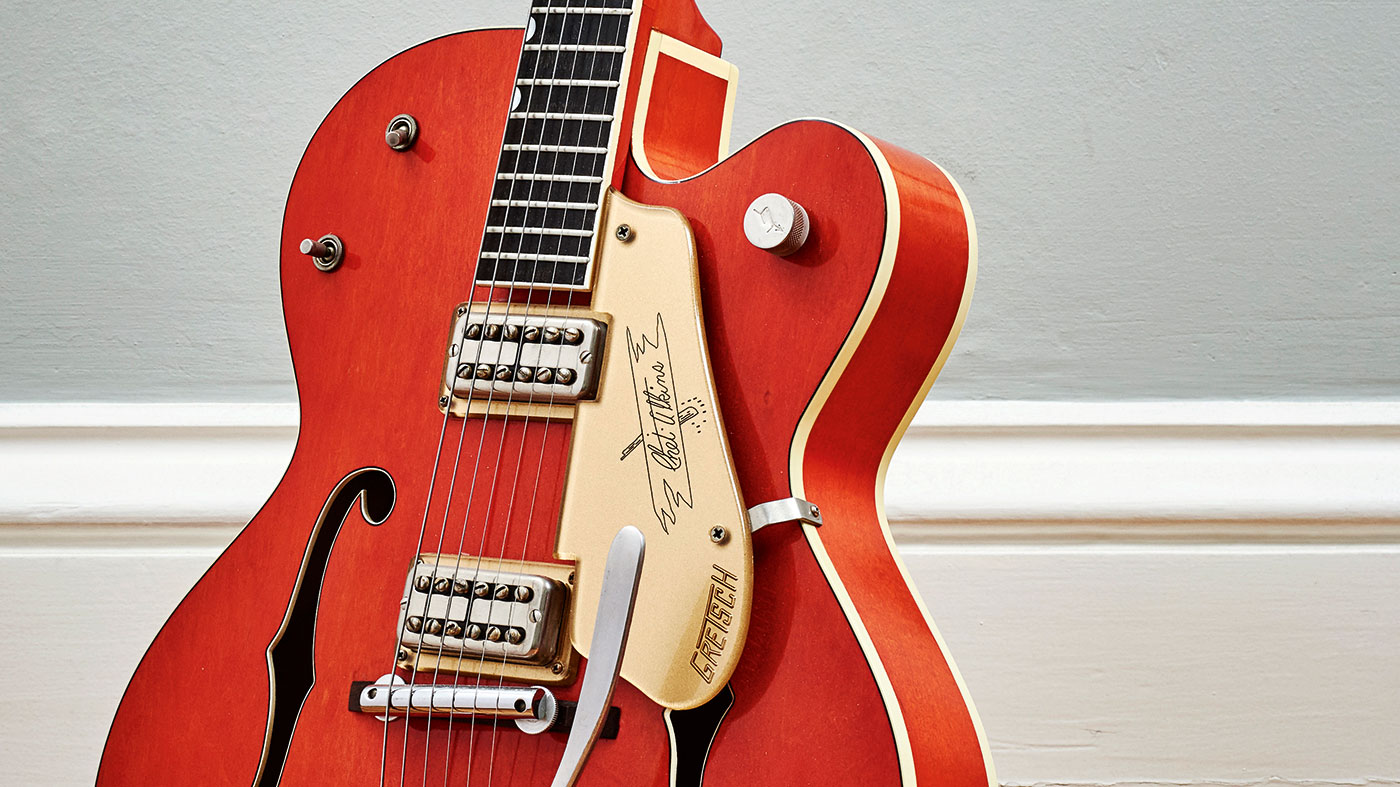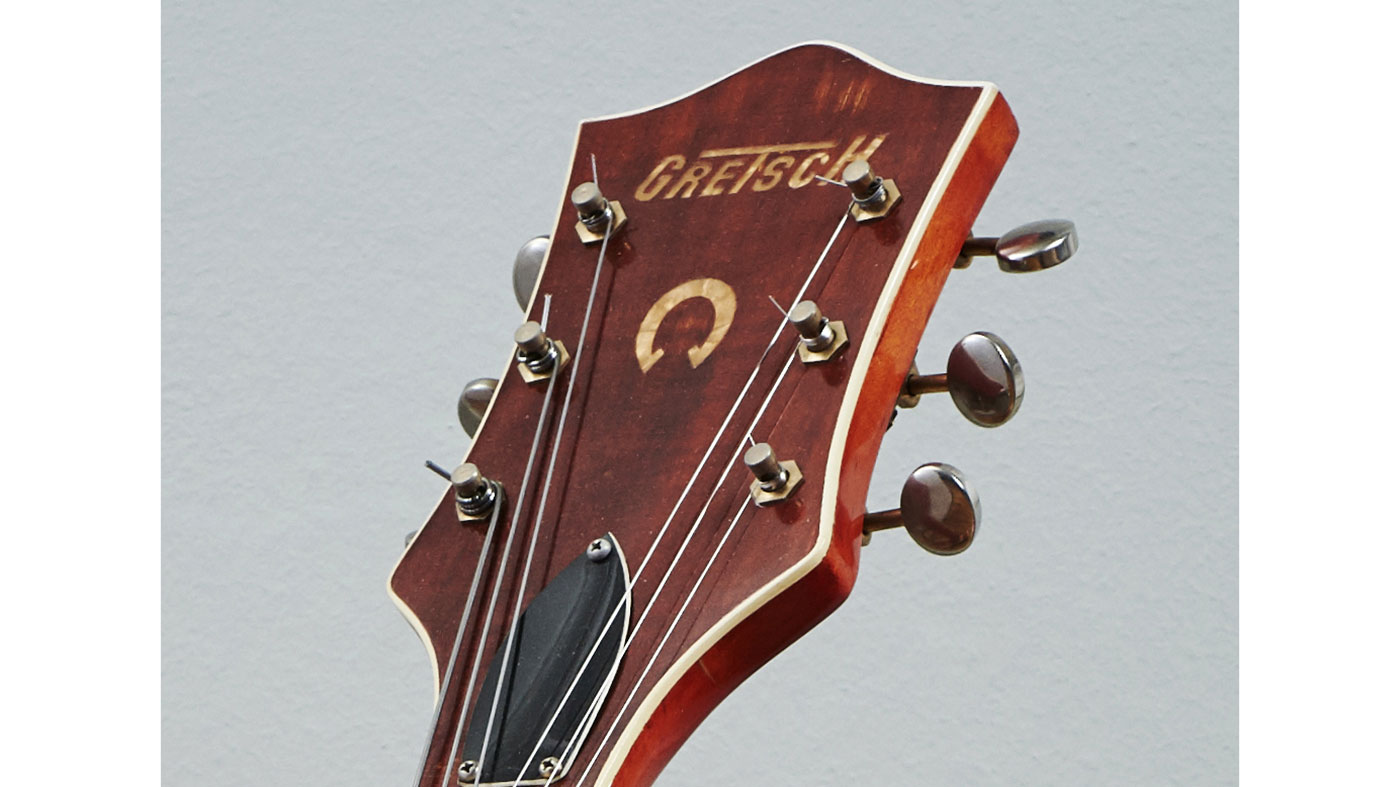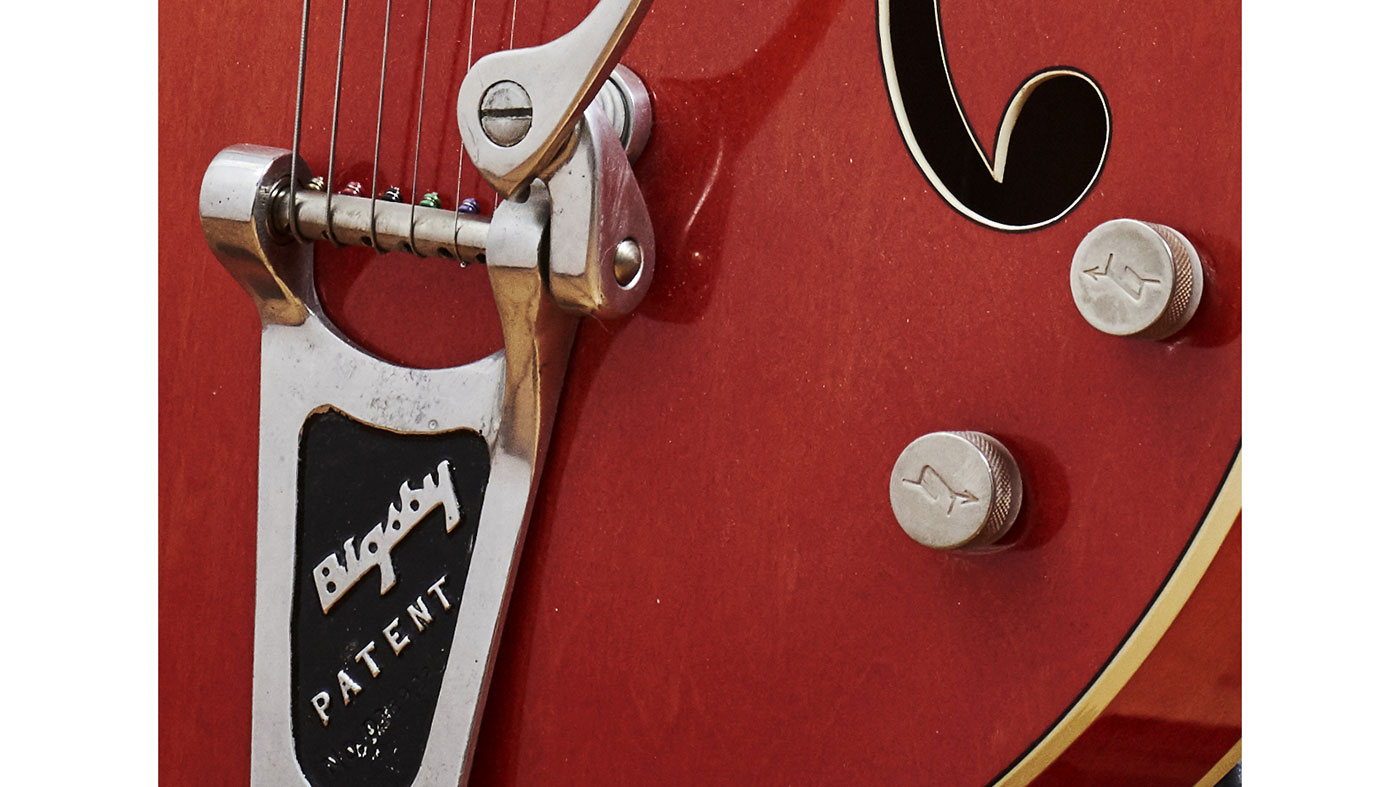Classic gear: Gretsch 6120 Chet Atkins Hollow Body/Nashville
Chet Atkins’ seminal signature archtop was a watershed for Gretsch…

As official endorsees with several signature models bearing their names, Chet Atkins is to Gretsch what Les Paul is to Gibson. While leading the way in terms of technique and recording technology, both were pioneering figures in the burgeoning electric guitar boom of the 50s and inspired a new generation of guitarists during the dawn of rock ’n’ roll.
Although Chet pledged allegiance to Gibson in the 80s and 90s after parting ways with the Baldwin-company-owned Gretsch brand in 1979 - bringing not only his name, but also the names of his classic Gretsch guitar models, the Country Gentleman and the Tennessean - he is more widely remembered for four Gretsch models released in the 50s. They were the 6120 Chet Atkins Hollow Body; the 6121 Chet Atkins Solid Body; the 6122 Chet Atkins Country Gentleman; and the 6119 Chet Atkins Tennessean.
The 6120 was already prototyped when his tenure with Gretsch began in 1954
While Chet would have significant input into the design of his favoured signature model, the 6122 Chet Atkins Country Gentleman, the 6120 was already prototyped when his tenure with Gretsch began in 1954. Derived from the DeArmond Dynasonic-loaded Electromatic 16-inch cutaway electric archtop released in 1951 (superseded by the single-cutaway Streamliner in 1955), the initial 6120 prototype design was influenced by Gretsch’s collaboration with jazz guitarist Jimmie Webster. It was labelled the ‘Streamliner Special’ and, in a similar style to Gretsch’s Round Up solidbody and Rancher flat-top guitars, featured various Western-themed motifs.
With his background in country music, Chet was seen as the perfect frontman for Gretsch’s new model. However, despite his recommendations of adding a Bigsby vibrato, metal nut and simplified metal bridge to enhance sustain, he wasn’t enamoured with the final result.
According to Ed Ball, author of Gretsch 6120: The History Of A Legendary Guitar, “Chet told me in 1995, ‘Although I was photographed with it, I only used the 6120 once in a while… I didn’t use it as much as I used the [6122] Country Gentleman.’ He was just excited to get his own signature model to compete with his friend, Les [Paul].”

Filter’Tron
During the heyday of the 50s American car craze, Gretsch kickstarted a trend among the major league manufacturers of using automotive paint finishes in the mass production of electric guitars. Displayed in Gretsch’s full colour 1955 Guitars For Moderns catalogue, the new Chet Atkins 6120 Hollow Body burst from the page in ‘amber red’ amid a rainbow of guitars in green, burgundy, red, orange, yellow, black and white. With “America’s big favorite CHET ATKINS” behind this vibrant array of electrics, Gretsch was shouting from the rooftops of its Brooklyn workshop about its new instruments.
In keeping with Gretsch’s progressive ethos, the 6120’s specs were revised and updated continually over the years. Dissatisfied with the sound of his singlecoil DeArmond Dynasonics, Chet had been working with electronics engineer and inventor Ray Butts since 1954 on developing a new pickup design, and the result was Gretsch’s in-house wound Filter’Tron humbucker. In 1958, the 6120 was fitted with dual Filter’Trons as standard, and in 1961, while taking heed of Gibson’s semi-acoustic thinline electrics, the 6120 received its second major design alteration in the form of a double-cutaway.
Get the MusicRadar Newsletter
Want all the hottest music and gear news, reviews, deals, features and more, direct to your inbox? Sign up here.
In 1964, the Hollow Body was rebranded the Nashville and it remained in production until 1980 following a tumultuous period with Baldwin throughout the late 60s and 70s. Having joined forces in 2002, Fender/ FMIC now offers its Gretsch-branded Nashvilles in many guises, including several Duane Eddy and Brian Setzer signature models. Along with Eddie Cochran and Pete Townshend, maybe they found something in the 6120 that Chet didn’t!
1958 Gretsch 6120 Chet Atkins Hollow Body
1. Serial number
Five-digit number (usually in the 27000 to 30000 range) ink-stamped onto label located on inside back
2. Headstock
Single white binding; T-roof Gretsch logo; horseshoe inlay

3. Body
Hollowbody archtop; 16 inches wide x 2 7/8 inches deep; laminated maple; rounded single-cutaway, two double-bound (b/w) f-holes; double-bound (b/w) top and back; ‘amber red’ finish
4. Pickups
Two Filter’Tron humbuckers; circa 4kohms DC resistance; three-way selector switch; independent volume pots (lower treble bout); master volume pot (upper treble bout); three-way master tone preset switch
5. Hardware
Three-a-side Waverly tuners; ½-inch diameter adjustable metal bar bridge; Bigsby vibrato; three arrow-through ‘G’ knobs; plain pickup covers; two three-way selector switches; side‑mounted jack socket

6. Plastics
Black and white laminated truss rod cover; signpost and signature pickguard with T-roof Gretsch logo; smooth pickup surrounds
7. Neck
Glued-in maple neck; 24 ¾-inch scale length; 22-fret bound ebony fingerboard with ‘thumbprint’ inlays; ‘amber red’ finish
The Evolution of the Gretsch 6120 Hollow Body/Nashville
- 1954 Prototypes developed; introduced as Chet Atkins Hollow Body in ‘amber red’
- 1955 16" wide & 27/8" deep single-cut body; longhorn steer headstock inlay
- 1956 Horseshoe headstock inlay; plain block fretboard inlays
- 1957 Humped block fretboard inlays; ‘G’ logo on lower bass bout disappears
- 1958 Filter’Trons added; fretboard changes to ebony; ‘thumbprint’ fretboard inlays
- 1959 Gretsch-logo Bigsby; zero fret; bone nut
- 1960-’61 27/8" body depth reduced to 2½", then 2¼"; double-cut; simulated/painted f-holes; leather back pad
- 1964 Renamed ‘Nashville’; nameplate on headstock
- 1970s Renumbered 7660 (’71); open f-holes (’73); curved tubular Bigsby arm (’75)
Rod Brakes is a music journalist with an expertise in guitars. Having spent many years at the coalface as a guitar dealer and tech, Rod's more recent work as a writer covering artists, industry pros and gear includes contributions for leading publications and websites such as Guitarist, Total Guitar, Guitar World, Guitar Player and MusicRadar in addition to specialist music books, blogs and social media. He is also a lifelong musician.
“Its mission is simple: unleash the power of any amplifier or line-level source without compromise”: Two Notes promises a “watershed” in tube amp control with the Torpedo Reload II
MusicRadar deals of the week: Enjoy a mind-blowing $600 off a full-fat Gibson Les Paul, £500 off Kirk Hammett's Epiphone Greeny, and so much more












